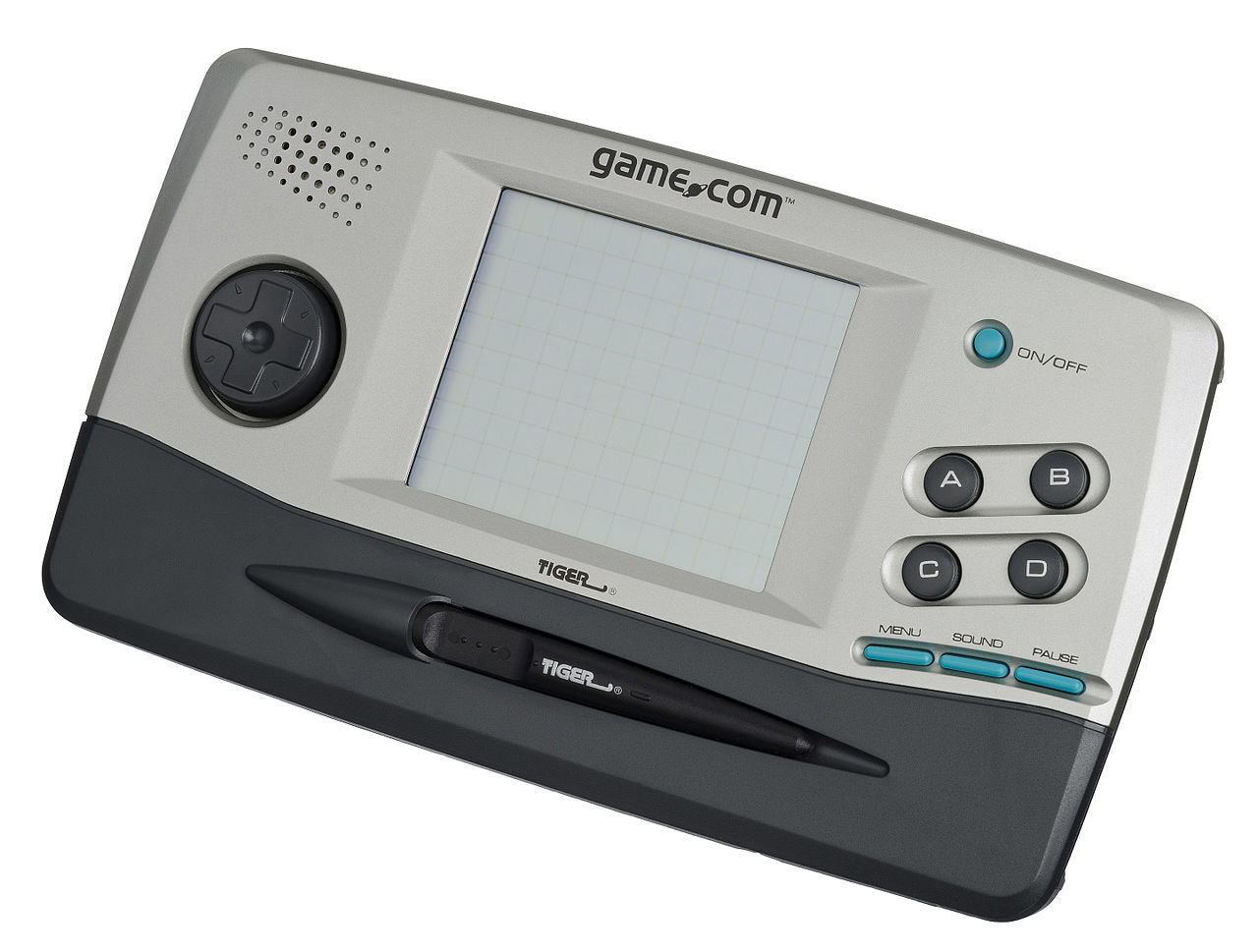-
1997 August
Hardware Description
The Game.com is a fifth-generation handheld game console released by Tiger Electronics in August 1997. A smaller version, the Game.com Pocket Pro, was released in mid-1999. The first version of the Game.com can be connected to a 14.4 kbit/s modem for Internet connectivity, hence its name referencing the top level domain .com. It was the first video game console to include a touchscreen and the first handheld console to include Internet connectivity. The Game.com sold fewer than 300,000 units and was discontinued in 2000 because of poor sales.
By February 1997, Tiger was planning to release a new game console, the handheld "game.com", as a direct competitor to Nintendo's portable Game Boy console. Prior to its release, Tiger Electronics stated that the Game.com would "change the gaming world as we know it," while a spokesperson stated that it would be "one of this summer's hits." The Game.com, the only new game console of the year, was on display at the Electronic Entertainment Expo (E3) in May 1997, with sales expected to begin in July. Dennis Lynch of the Chicago Tribune considered the Game.com to be the "most interesting hand-held device" on display at E3, describing it as a "sort of Game Boy for adults".
The Game.com was released in the United States in August 1997, with a retail price of $69.95, while an Internet-access cartridge was scheduled for release in October. Lights Out was included with the console as a pack-in game and Solitaire was built into the handheld itself. The console's release marked Tiger's largest product launch ever. Tiger also launched a website for the system at the domain "game.com". The Game.com was marketed with a television commercial in which a spokesperson insults gamers who ask questions about the console, while stating that it "plays more games than you idiots have brain cells"; GamesRadar stated that the advertisement "probably didn't help matters much". By the end of 1997, the console had been released in the United Kingdom, at a retail price of £79.99.
The Game.com came in a black-and-white color, and featured a design similar to Sega's Game Gear console. The screen is larger than the Game Boy's and has higher resolution. The Game.com included a phone directory, a calculator, and a calendar, and had an older target audience with its PDA features. Tiger designed the console's features to be simple and cheap. The device was powered by four AA batteries, and an optional AC adapter was also available. One of the major peripherals that Tiger produced for the system was the compete.com serial cable, allowing players to connect their consoles to play multiplayer games. The console includes two game cartridge slots. In addition to reducing the need to swap out cartridges, this enabled Game.com games to include online elements, since both a game cartridge and the modem cartridge could be inserted at the same time.
The Game.com was the first video game console to feature a touchscreen and also the first handheld video game console to have Internet connectivity. The Game.com's black-and-white monochrome touchscreen measures approximately one and a half inches by two inches, and is divided into square zones that are imprinted onto the screen itself, to aid players in determining where to apply the stylus. The touchscreen lacks a backlight. The Game.com was also the first handheld gaming console to have internal memory, which is used to save information such as high scores and contact information.
-
Manufacturer:
-
Hardware Type:
Video Game -
Manufacture Year:
1997 August -
More Info:
-
We recognize our sponsors starting at $1 per entry.
Learn more at https://www.ithistory.org/benefits
Date discontinued:
2000

